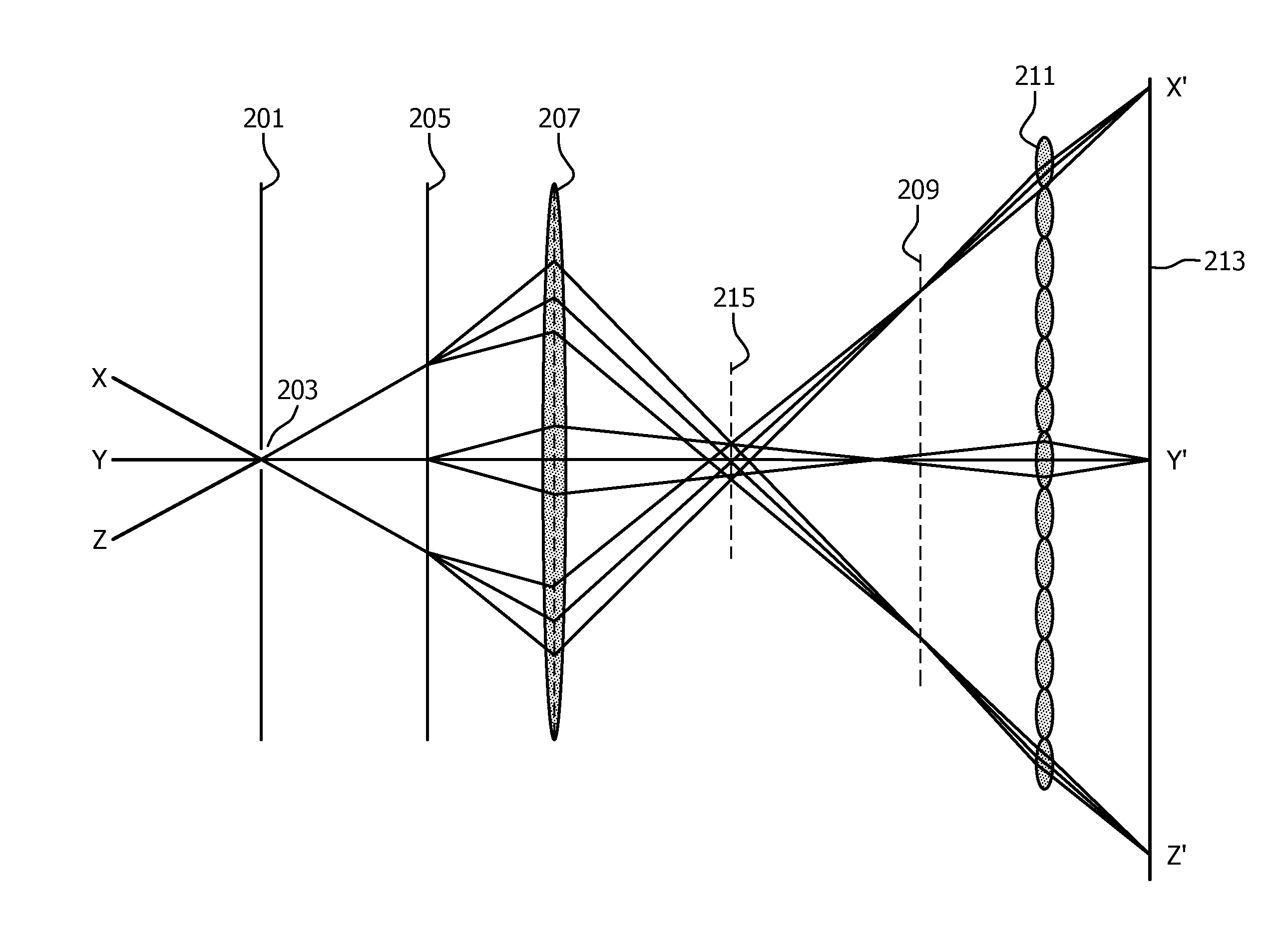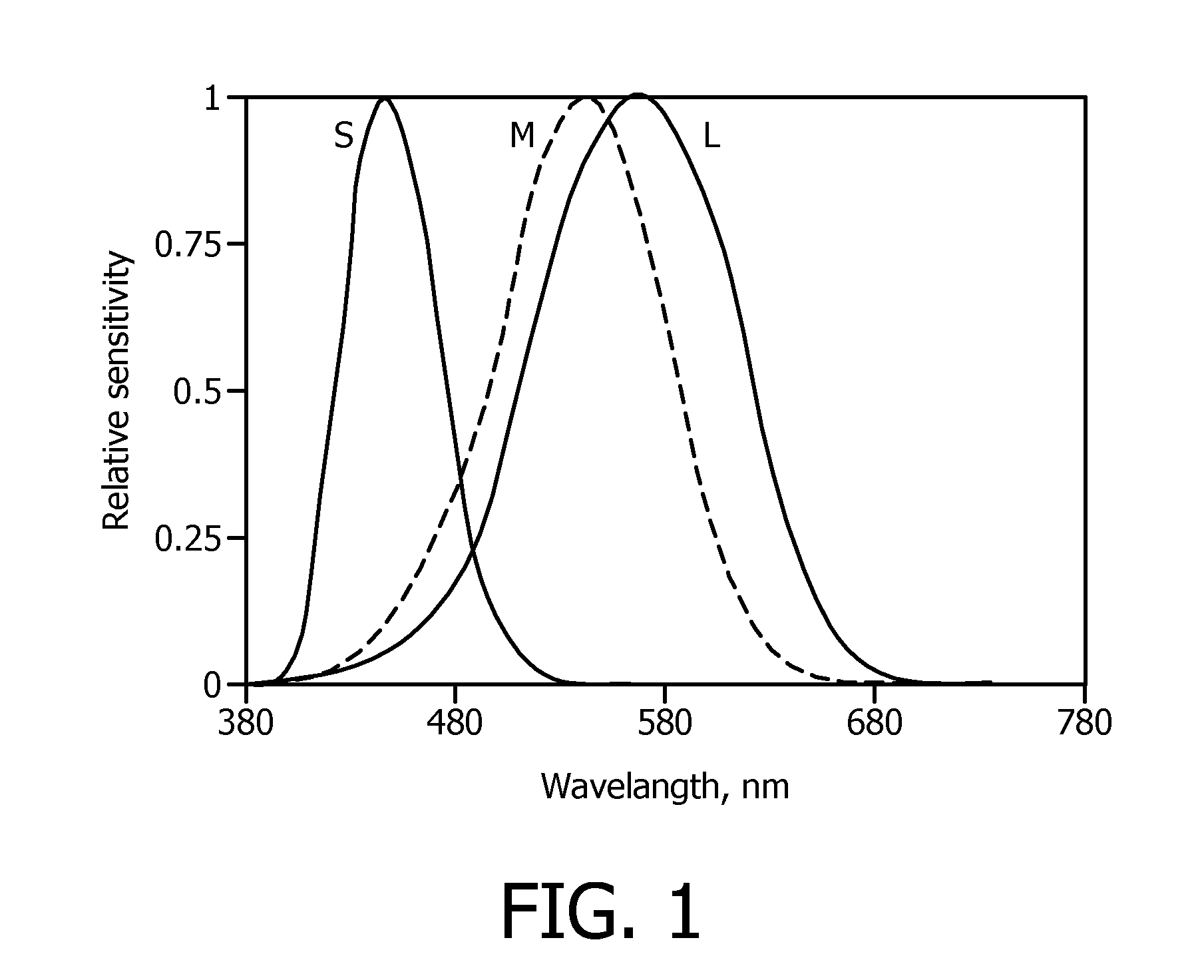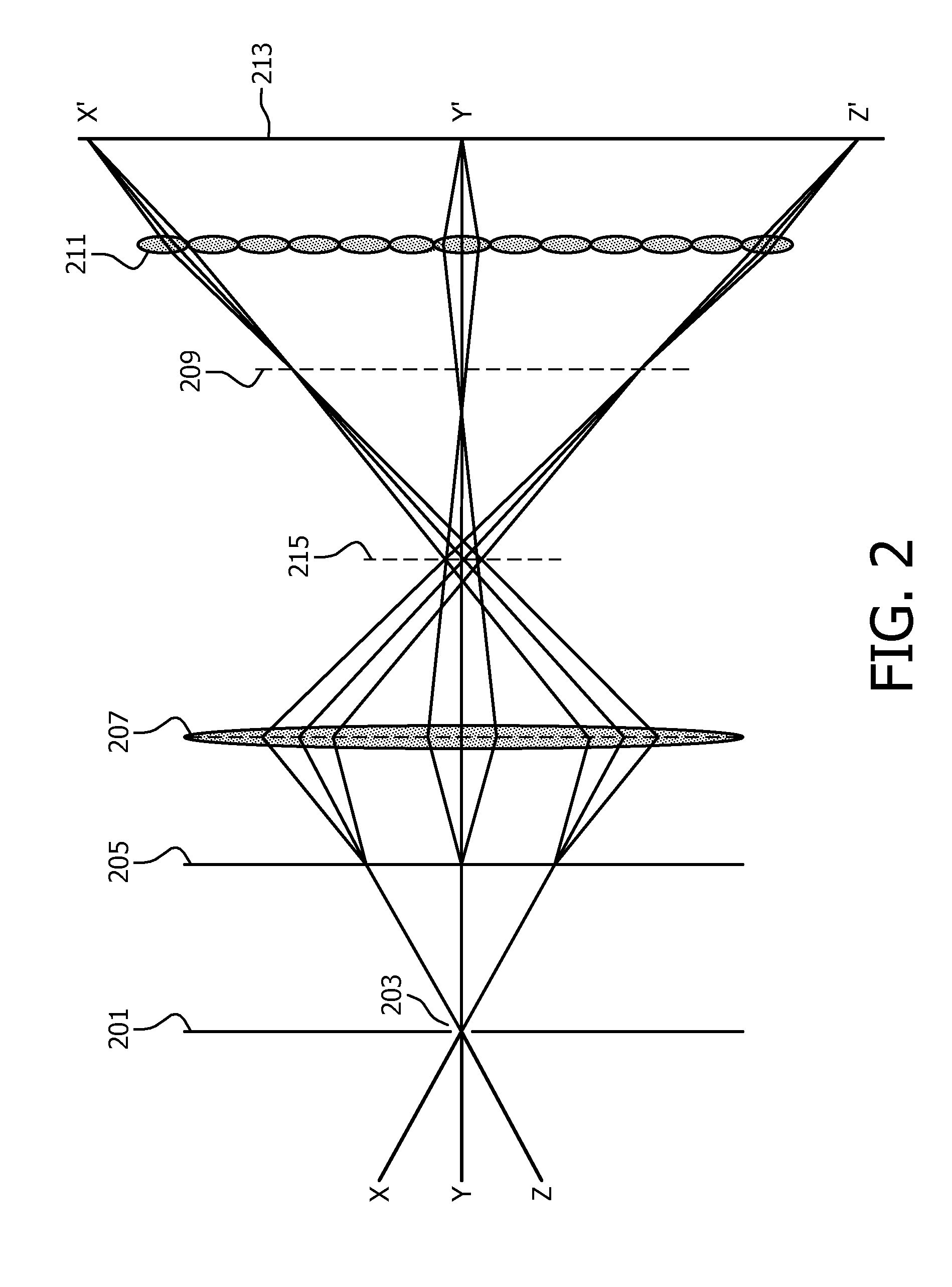Multi-spectral imaging
a multi-spectral imaging and imaging technology, applied in the field of multi-spectral imaging, can solve the problems of reduced reliability, increased cost, increased complexity, etc., and achieve the effects of improving spatial and spectral resolution, improving temporal performance, and high temporal resolution
- Summary
- Abstract
- Description
- Claims
- Application Information
AI Technical Summary
Benefits of technology
Problems solved by technology
Method used
Image
Examples
Embodiment Construction
[0066]FIG. 2 illustrates an example of elements of a multi-spectral camera in accordance with some embodiments of the invention.
[0067]The multi-spectral camera comprise a light blocking element 201 which comprises one or more holes 203 that allow light to pass through. For clarity, the following description will focus on an example wherein a pinhole (or a narrow slit) is provided in the light blocking element 201 but it will be appreciated that in other embodiments, more than one hole may be included.
[0068]In the example, the hole 203 has a maximum dimension of less than 1 mm (or for a slit, a width of less than 1 mm). Specifically, the hole 203 is so small that the direction / angle of the light rays from the objects being imaged do not vary more than e.g. 1° across the hole, i.e. rays that originate from the same position can only pass through the hole 203 if they have an angle relative to the hole which is within 1° of each other. In the specific example, the multi-spectral camera ...
PUM
 Login to View More
Login to View More Abstract
Description
Claims
Application Information
 Login to View More
Login to View More - R&D
- Intellectual Property
- Life Sciences
- Materials
- Tech Scout
- Unparalleled Data Quality
- Higher Quality Content
- 60% Fewer Hallucinations
Browse by: Latest US Patents, China's latest patents, Technical Efficacy Thesaurus, Application Domain, Technology Topic, Popular Technical Reports.
© 2025 PatSnap. All rights reserved.Legal|Privacy policy|Modern Slavery Act Transparency Statement|Sitemap|About US| Contact US: help@patsnap.com



